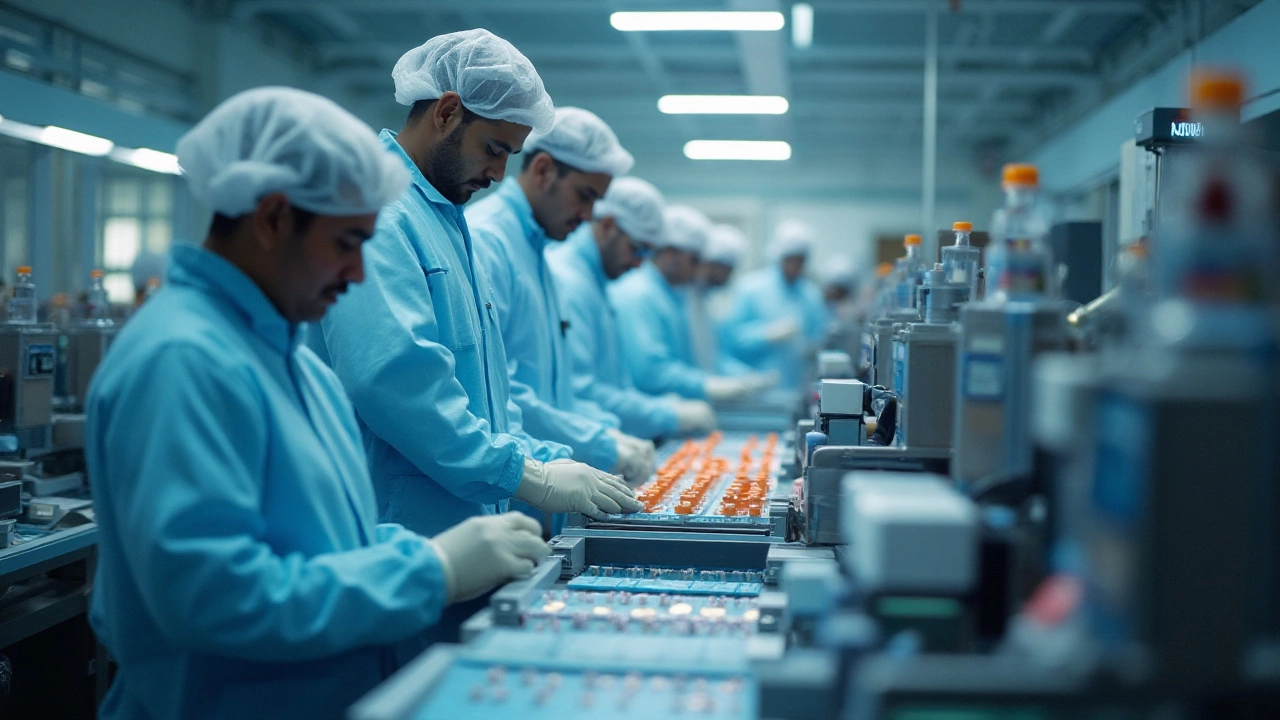Drug Production in India: What You Need to Know
India has become a hotspot for drug production, and it’s not by accident. Affordable labor, solid regulations, and a huge domestic market create a perfect mix for pharma companies. If you’re wondering how to get involved or simply want to understand the scene, this guide gives you the practical details you need.
Why India Leads in Drug Production
First, the cost advantage is real. Manufacturing a tablet in India can be up to 40% cheaper than in many Western countries. That savings comes from lower wages, bulk buying of raw materials, and efficient supply chains.
Second, regulatory bodies like the CDSCO have streamlined approval procedures. In recent years, the average time to get a new drug approved has dropped from 18 months to under a year, making it faster for companies to bring products to market.
Third, the talent pool is strong. Indian universities churn out thousands of pharmacy graduates each year, and many of them get trained on the latest GMP (Good Manufacturing Practice) standards. This means factories can staff skilled workers quickly.
Finally, the export market is booming. In 2024, India exported over $20 billion worth of pharmaceuticals, with high demand from Africa, the Middle East, and Latin America. That global reach opens extra revenue streams for manufacturers.
Steps to Set Up a Drug Manufacturing Facility
1. Choose the right location. Look for industrial parks that offer power, water, and waste‑treatment facilities. States like Gujarat and Maharashtra provide incentives such as tax breaks and fast‑track permits.
2. Secure licenses. You’ll need a manufacturing license from the CDSCO, a storage license for controlled substances, and environment clearances. The process involves submitting detailed plant layouts, equipment lists, and quality‑control plans.
3. Invest in core equipment. A typical plant needs reactors, dryers, tablet presses, coating machines, and packaging lines. Modern equipment can improve yield by 10‑15% and reduce waste.
4. Implement GMP standards. Set up clean rooms, validate cleaning procedures, and train staff on hygiene practices. Audits are regular, so keeping records organized saves headaches later.
5. Plan for raw‑material sourcing. Partner with reliable suppliers for APIs (active pharmaceutical ingredients) and excipients. Many Indian firms source locally to cut transport costs, but always verify certificates of analysis.
6. Build a quality‑control lab. On‑site testing of potency, purity, and stability ensures each batch meets regulatory limits. Investing in a solid lab reduces the risk of batch rejections.
7. Focus on sustainability. Treating waste water, recycling solvents, and using energy‑efficient machines not only comply with environmental rules but also lower operating costs.
Getting these steps right can shorten the time from concept to market, and it positions your plant for both domestic sales and exports.
Overall, drug production in India offers a blend of cost efficiency, skilled labor, and supportive policies. Whether you’re a startup looking to launch a generic drug or a multinational expanding its footprint, the Indian market delivers solid opportunities. Keep an eye on regulatory updates, invest in quality systems, and you’ll be ready to ride the growth wave.

Why India Leads in Global Pharmaceutical Manufacturing
India has emerged as a global leader in pharmaceutical manufacturing due to its robust infrastructure, skilled workforce, and cost-effective production. The country's strategic advantage in the sector is bolstered by a supportive regulatory environment and significant investment in research and development. Key factors such as intellectual property policies and an emphasis on quality control have further solidified India's position in the global market. Understanding these dynamics provides insight into India's critical role in the world's pharmaceutical supply chain.
Read More